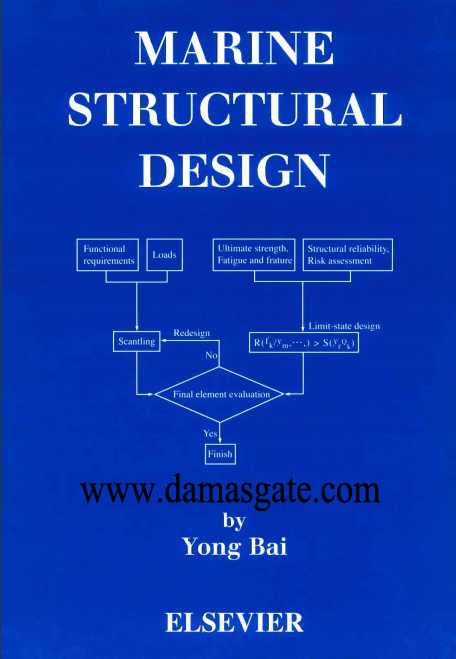MARINE STRUCTURAL DESIGN
This book is written for marine structural engineers and naval architects, as well as mechanical engineers and civil engineers who work on struch~ral design. The preparation of the book is
motivated by extensive use of the finite element analysis and dynamidfatigue analysis, fast paced advances in computer and information technology, and application of risk and reliability methods.
As the professor of offshore structures at Stavanger University College, I developed this book for my teaching course TE 6076 “Offshore Structures” and TE6541 “Risk and Reliability Analysis of
Offshore Structures” for M.Sc and Ph.D. students.

PREFACE
This book has also been used in IBC/Clarion industry training courses on design and construction of floating production systems for engineers in the oil/@ industry.
As reliability-based limit-state design becomes popular in structural engineering, this book may also be a reference for structural engineers in other disciplines, such as buildings, bridges and spacecraft.
My former supervisors should be thanked for their guidance and inspiration. These include: Executive Vice President Dr. Donald Liu at American Bureau of Shipping (ABS), Professor Torgeir
Moan at Norwegian University of Science and Technology 0, Professor Robert Bea and Professor Alaa Mansour at University of California at Berkeley, Prof. Preben Terndrup Pedersen at Technical University of Denmark, Professor T. Yao at Osaka University and Professor M. Fujikubo
at Hiroshima University. The friendship and technical advice from these great scientists and engineers have been very important for me to develop materials used in this book.
As manager of advanced engineering department at JP Kenny Norway office (now a section of ABB) and manager of offshore technology department at the American Bureau of Shipping, I was given
opportunities to meet many industry leaders in oil companies, desigdconsulting offices, classification societies and contractors. From ISSC, IBC, SNM, OMAE, ISOPE and OTC conferences and industry (ISO/APYDeepstar) committees, I leamed about the recent developments in industry applications and research.
The collaboration with Dr. Ruin Song and Dr. Tao Xu for a long period of time has been helpful to develop research activities on structural reliability and fatigue respectively. Sections of this book relating to extreme response, buckling of tubular members, FPSO hull girder strength and reliability were based on my SNAME, 0- and ISOPE papers co-authored with Professors Preben Temdrup
Pedersen and T. Yao and Drs. Yung Shin, C.T. Zhao and H.H. Sun. Dr. Qiang Bai and Ph.D. student Gang Dong provided assistance to format the manuscript. Professor Rameswar Bhattacharyya, Elsevier’s Publishing Editor James Sullivan and Publisher Nick
Pinfield and Senior Vice President James Card of ABS provided me continued encouragement in completing this book.
I appreciate my wife Hua Peng and children, Lihua and Carl, for creating an environment in which it
has been possible to continue to write this book for more than 5 years in different culture and working environments.
I wish to thank all of the organizations and individuals mentioned in the above (and many friends and authors who were not mentioned) for their support and encouragement.
Yong BAI Houston, USA
Download
http://s18.alxa.net/s18/srvs2/01/MAR...RAL.DESIGN.rar